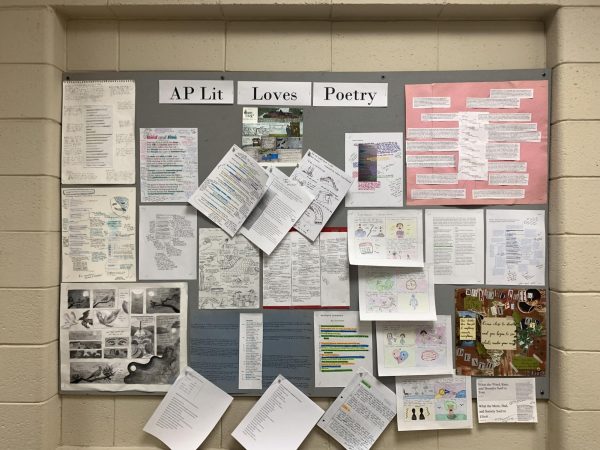What is National Merit?
Towards the end of September every year, a handful of students walk into their fourth block classes with pretzels in hand, symbolic of achievement. The achievement: being selected as a semifinalist in for the National Merit Scholarship, a program one can partake in through the PSAT.
The National Merit Scholarship Program has 1.5 million entrants annually, with 50,000 of them earning a reward. Thirty-four thousand can earn commended status, 16,000 can earn semifinalist status, and of them, 15,000 move on to finalist status.
The requirements are quite simple: to be enrolled in high school, take the PSAT in the specified year (not exceeding junior year), and to be or plan on being an American citizen.
Mrs. Barrett, sophomore house counselor, highly recommended taking the PSAT in junior year after the one offered in sophomore year, because it offers the chance to win the National Merit Scholarship, “the only [thing] the PSAT counts for in junior year.”
South has a long tradition of such winners, getting a handful of students selected as recipients of the National Merit Scholarship organization, as commended students, semifinalists, and finalists. The school’s track record for converting semifinalists into finalists is also unblemished, Mrs. Barrett attested.
While Mrs. Barrett was not able to reveal the names of the CB South Semifinalists for this year just yet (they haven’t been made publically available), she was able to say that “this year there were five students.”
To qualify for semifinalist status, out of the 240 points offered in the exam, students need to attain a score “typically between 214-218,” Mrs. Barrett said. “This year the [required] score was 217.”
It is also stressed that the PSAT can aid in preparation for the SAT, a subject which Mr. Pecic, CB South’s librarian, specializes in. An advocate of prepping for the standardized test that so many kids take, Mr. Pecic noted that ePrep is an excellent tool for studying. “It’s our best one,” he said, “Over 1,000 kids use it, and if you do it, it definitely increases your score. You have to get on ePrep and use it.”
EPrep is free for CB South students. The normal price runs $199.
Mrs. Barrett also offered more review techniques: “Go over notes, review, and be familiar with the test.” She said, “There are different methods of test taking that work” and to keep in mind that the test is “as much about speed as anything else.” Getting a multiple choice question wrong will cause a quarter of a point to be lost, so students ought to be fast yet remain careful and vigilant in their quest to get a high score.
Mr. Pecic and Mrs. Barrett both agree on one of the most significant things to increase PSAT and SAT score: reading. Mr. Pecic suggested that one should “Read everyday. Kids who read score better on standardized tests.” Mrs. Barrett echoed the sentiment in saying that one should “Read, read, read, and read more.”
But what’s the significance of winning a Merit Scholarship, and how can it help in life? “The main reasons are personal achievement, financial reward, and for applying to schools,” Mrs. Barrett said. “Finalist status is shared with colleges, and many colleges have a category specifically for [National Merit Scholarships].”
“Companies also endow students who meet their corporation’s requirements,” Mrs. Barrett added. “But the criteria for [these] scholarships isn’t controlled by the students.” If a student wants a sure mark of achievement and financial gain, he or she should have the “main goal of semi-finalist status.”
The National Merit Scholarship aids in many aspects for high school students, and most teachers at South recommend taking the PSAT. Even if a score isn’t high enough to earn the National Merit Scholarship, the practice can go a long way in preparing students for the rigor of the SAT.


